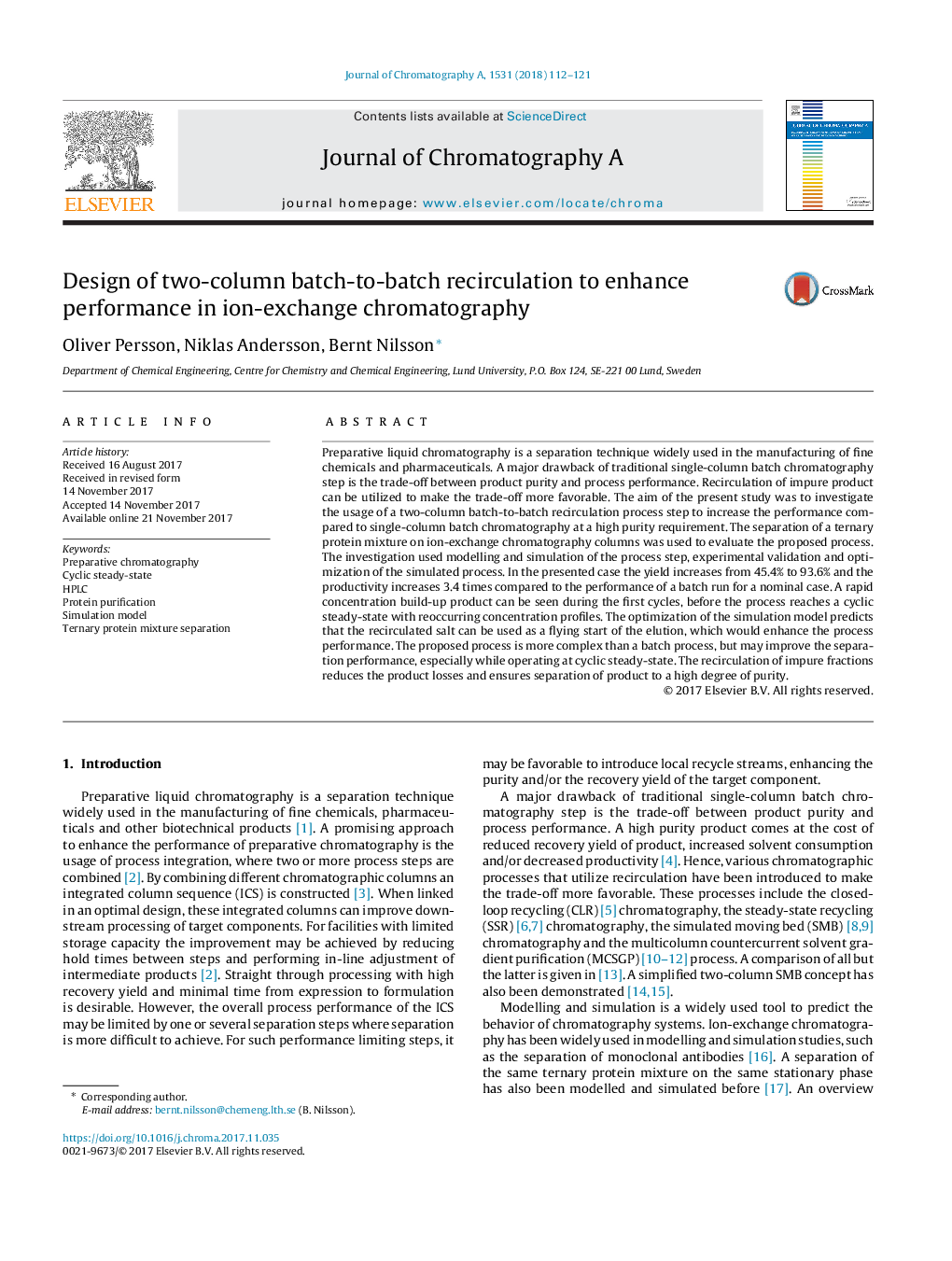| Article ID | Journal | Published Year | Pages | File Type |
|---|---|---|---|---|
| 7609307 | Journal of Chromatography A | 2018 | 10 Pages |
Abstract
Preparative liquid chromatography is a separation technique widely used in the manufacturing of fine chemicals and pharmaceuticals. A major drawback of traditional single-column batch chromatography step is the trade-off between product purity and process performance. Recirculation of impure product can be utilized to make the trade-off more favorable. The aim of the present study was to investigate the usage of a two-column batch-to-batch recirculation process step to increase the performance compared to single-column batch chromatography at a high purity requirement. The separation of a ternary protein mixture on ion-exchange chromatography columns was used to evaluate the proposed process. The investigation used modelling and simulation of the process step, experimental validation and optimization of the simulated process. In the presented case the yield increases from 45.4% to 93.6% and the productivity increases 3.4 times compared to the performance of a batch run for a nominal case. A rapid concentration build-up product can be seen during the first cycles, before the process reaches a cyclic steady-state with reoccurring concentration profiles. The optimization of the simulation model predicts that the recirculated salt can be used as a flying start of the elution, which would enhance the process performance. The proposed process is more complex than a batch process, but may improve the separation performance, especially while operating at cyclic steady-state. The recirculation of impure fractions reduces the product losses and ensures separation of product to a high degree of purity.
Related Topics
Physical Sciences and Engineering
Chemistry
Analytical Chemistry
Authors
Oliver Persson, Niklas Andersson, Bernt Nilsson,
